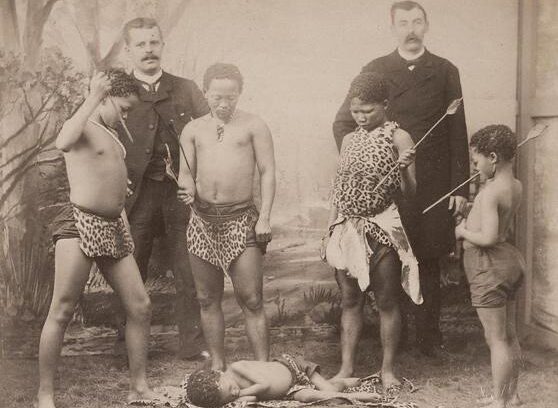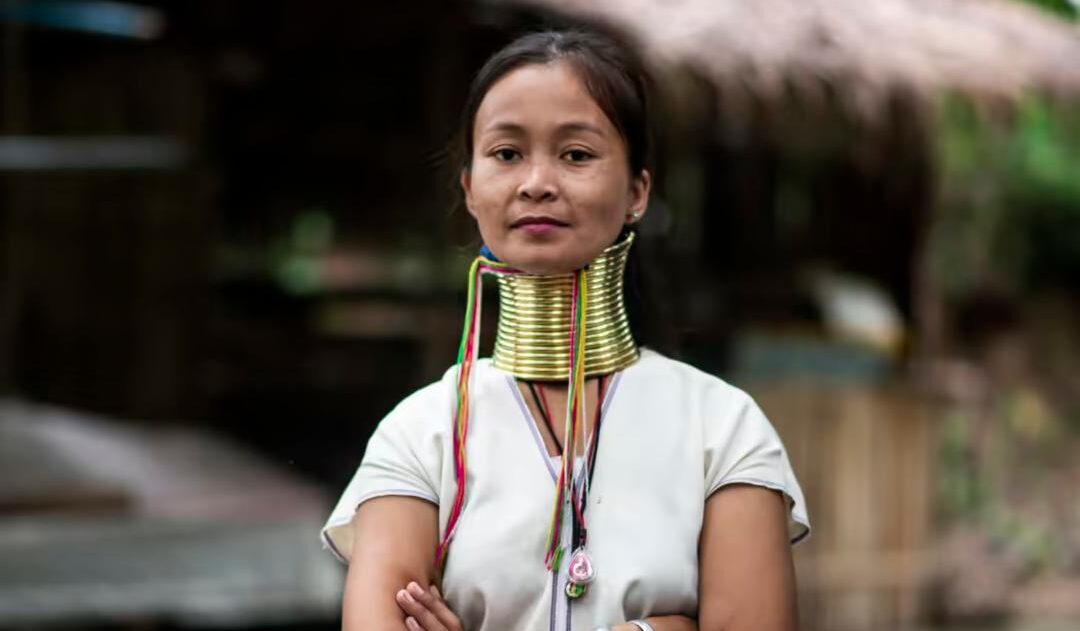By Anastasia Aleiferi,
As we know, humanity has the ability to create amazing things, and to make progress through the use of technology and existing knowledge. It can make the world a more beautiful place and easier to live in. But what history has proven to us is that sometimes humans, in their search for wealth and power, are willing and capable of awful actions and extreme cruelty. Today, I want to talk to all of you reading this, about a dark part of human history that isn’t that far away in the past that many people don’t know about.
Human zoos, also known as ethnological expositions, were the public display of human beings that had different race or ethnic background and were considered to be in a more primitive state in relation to that of the white people, in a zoo-like setting. The displayed people may not have been in cages, but they were financially and socially caged by the owners of the zoos and didn’t have many freedoms or choices. They were forced to find ways to entertain the visitors, to increase the profit of the zoo. For example, the commonly known freak shows of the 20th century are also considered a type of human zoo, because the entertainers of the shows were people with some kind of deformity, disability, or particularity that made them marginalized and, for the sake of survival, they were put on display for the entertainment of visitors. The first human exhibits that became popular in the 1870s were called “exotic population exhibits” and existed in all major cities of the time, such as New York, Warsaw, London, Paris, and Milan. The exhibition slowly added some aspects of the “natural environment of the exotic people” to live in, so that the Western people would promote their superiority and imperialistic views and sell their racist ideology, continuing to promote the difference between the exotic races and their inferiority in relation to the Western world.

The objectification of these humans and the humiliation they experienced was unimaginable. The use of the word “exotic” was made widespread during that time and that is why, even in our days, the word “exotic” has a deep connection with something far away and a slightly commercialized connotation. In certain exhibitions, the humans were nude or seminude and put in cages. The overt sexual representation affected mostly women. Most women were put on display and weren’t allowed to have any privacy, sometimes even after their death. That was the case of Saartje Baartman. She participated in a traveling show that traveled from England to Ireland and she was forced to depict the “savage” woman so people could see the differences between her and the “average” woman. She was put on a skin tight see-through clothes and people could poke her or push her to witness the differences. And that happened without her consent during her life and after her death. Moreover, men too were treated as objects. One man, after his death in 1796, was used as an exhibit in the Viennese Natural History Museum for almost a decade. Also, many of the people that were exhibited were slaves or former slaves who had no chance for real freedom and were constantly reminded of the destruction of their homes and brutal oppression by the Western world. Some of the people that were exhibited were also tricked into life. That is the case of Molika. Molika was one of the 32 indigenous people of Guyana who volunteered to go to Europe because they were told they could live a better life and have more money. However, they were put in cages and were subjected to racial scientific studies, and had to endure many hardships (illnesses, cold winters, fatigue, and famine). Most of them died, but Molika and nine others managed to survive and return to their homeland.
The exotic aspect that the human zoos offered lost its popularity during the Second World War. Ironically enough, Nazi Germany of 1931 began a systematic effort to shut down these types of exhibitions and shows because they didn’t want to allow these people to work and gain attention or money by doing their “inferior shows”. But don’t get me wrong dear readers, just because they started it doesn’t mean they made the lives of these people any easier, only the opposite; most of them were forced to work in war factories because they couldn’t get any other jobs or didn’t have any rights. During a period of such a large-scale conflict and the persecution exercised by the Nazis against the Jews and other social and racial groups that didn’t fit their ideology, as well as the presence of colonial troops in the war and the increasing vocal anti-colonial sentiment, it couldn’t be possible for these zoos to continue to operate. These expositions were very popular during the 19th to mid-20th century. During the period of decolonization, the last human zoo that was shut down was the Universal Exposition of Brussels in 1958.
Even though the last human zoo was closed in 1958, there are still some types of their existence to our days. That is the example of the long neck tribe in Northern Thailand, where young girls may feel socially pressured to participate in the tradition of the village by donning big rings around their necks and performing for the tourists each day.

So, the question now for everyone is, what can be considered an action of free will or an action of oppression, so it can be related to the practices that took place in human zoos? Do human zoos still exist? Well, the answer is no, human zoos no longer exist because there isn’t any evidence that can support that they exist, as not all their defining aspects exist when talking about a certain place where people practice a certain tradition, or the girls that work in go-go bars cannot be considered exhibits. In the end, the tourist attractions that involve local people and their traditions are just using their culture to gain profit but also in a way to connect with the tourist and spread their culture to the world. There are many tourist attractions that involve the local population but without the feelings of inferiority or exploitation. Since the notion of free will and equal opportunity exists, we cannot consider at times the commercialization of culture as a modern type of human zoo.
References
- India Andaman Jarawa tribe in ‘shocking’ tourist video. BBC. Available here
- Human zoos: When real people were exhibits. BBC. Available here
- The History of Human Zoos. nonviolenceny.org. Available here
- The Most Outrageous Human Zoo Exhibits. Human Zoo. Available here




